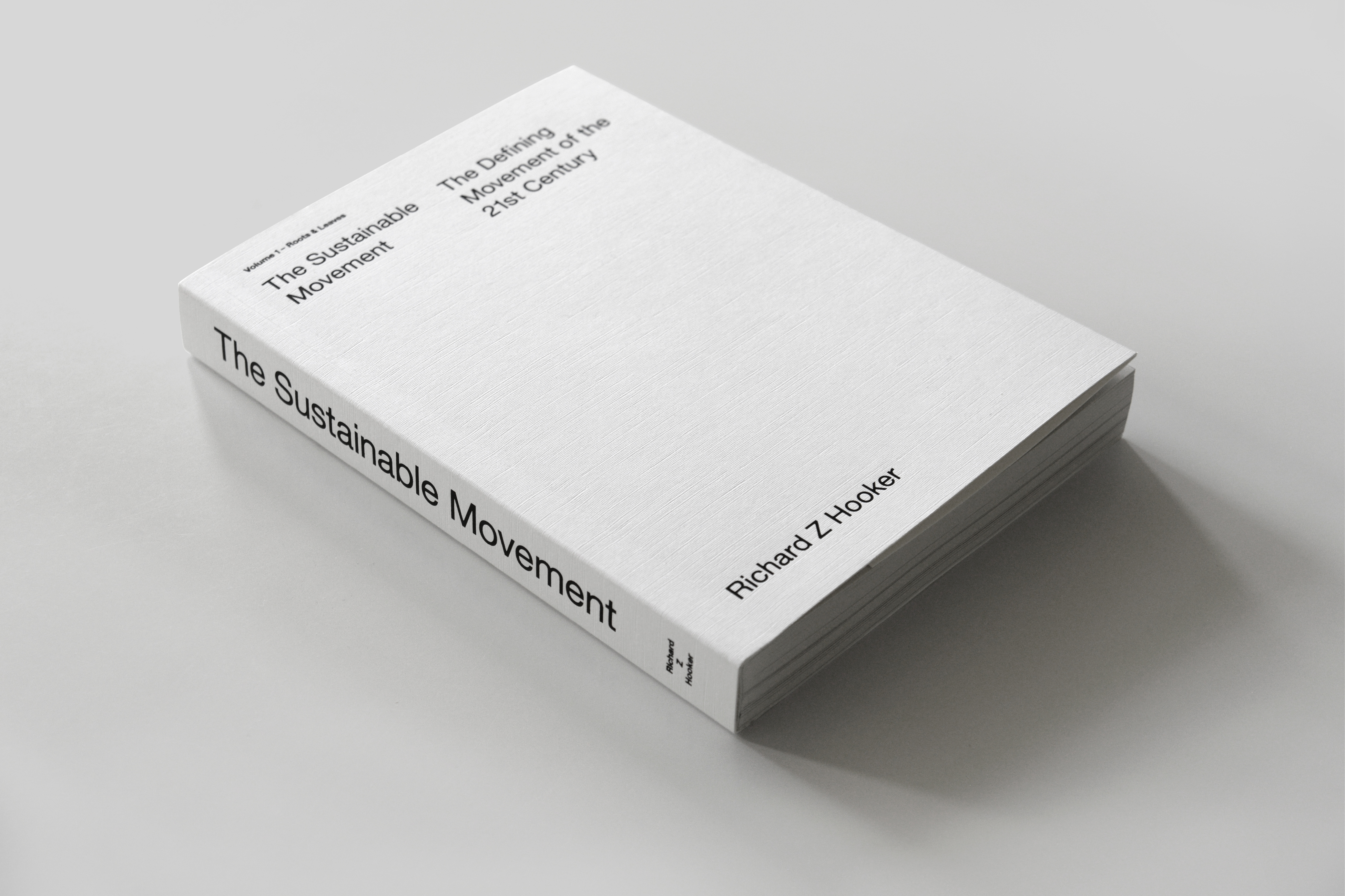A 21st Century
Movement
Sustainable by Design
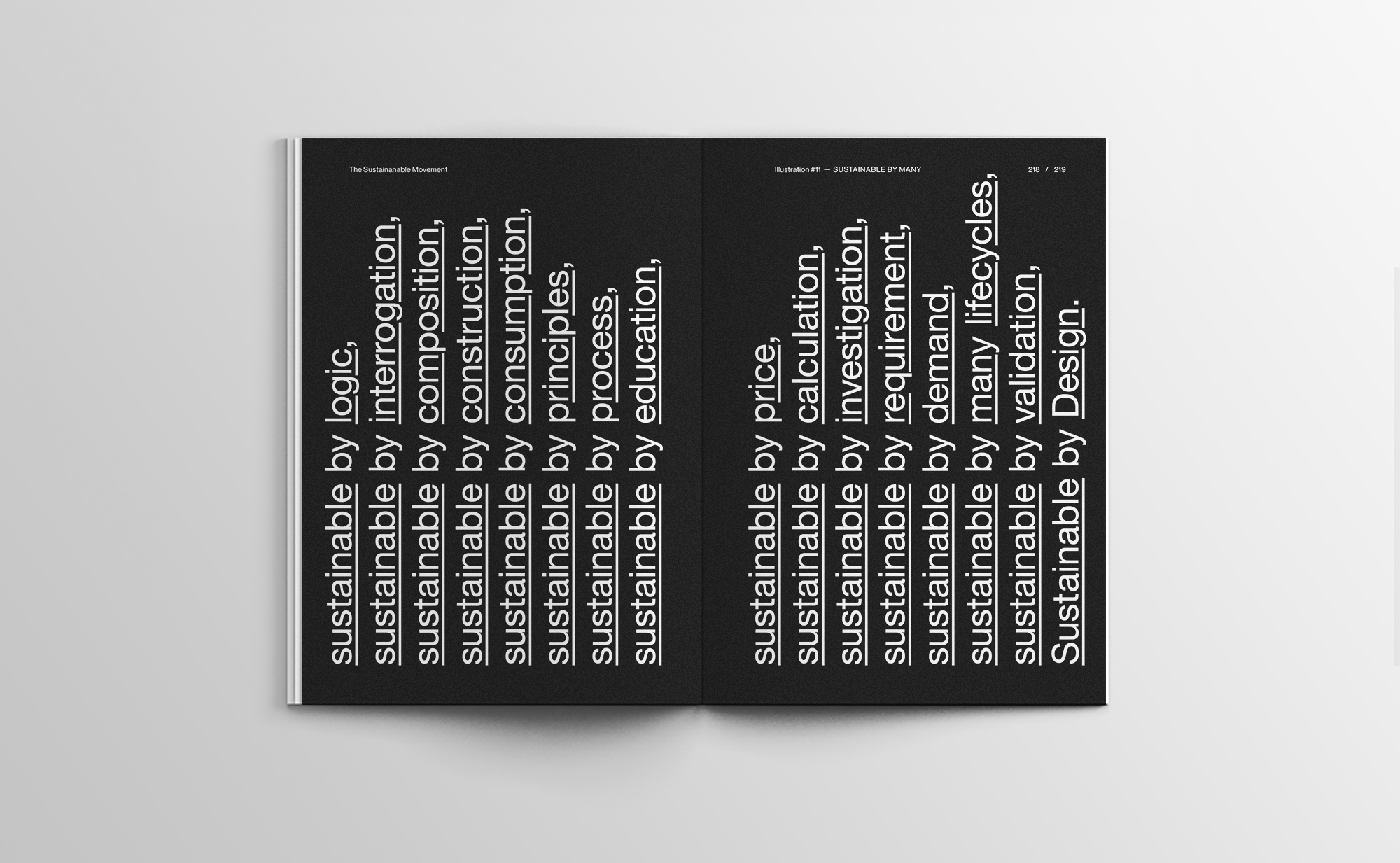 Illustration – Sustainable by Many
Illustration – Sustainable by Many‘The designer will be the coordinator. Their responsibility will be to coordinate, in close collaboration with a large number of specialists.’
—
Tomas Maldonado, 1958.
—
Tomas Maldonado, 1958.
Far beyond the efforts of one individual, a mobilisation of this scale will rely on the strength of wholehearted collective effort. The phrase ‘Sustainable by Design’ is perhaps already a more accurate and honest framing of the overall challenge at hand, because it implies that only a combination of interrogation, organisation, co-ordination, and most importantly action, will be the most effective way to solve any puzzle to which this ambition is applied.
Whilst previously ‘design’ was most loudly lauded in connection with the arts, over the last two decades, a proliferation in the spread of information and new tools, has meant an increasing number of people from disparate skill sets are now also literate in the language of design. So much so that the conversation grows around it too, encompassing the importance of simplicity, honesty and transparency in the organisation of all the systems which we are part of, and with which we interlink.
The ever-extending reach of the word ‘design’ has expanded to the point where a photographer might design a picture, just as a typographer designs a typeface or an architect designs a building. An entire user experience is designed and thoroughly thought through, just the same as an engineer will design around the consideration of a variety of mechanical parts or sequences of code. We are fast approaching the point where all aspects of the human condition are, at least to a certain extent, designed.
Some will argue that nature cannot have ‘been designed’, because it does not follow a purpose or agenda. ‘It is simply there.’ This may well be true, but if humankind relies on nature for our own existence and prosperity, then the design of how we interact with nature, and the protection, empowerment and rejuvenation of it, becomes our very focus and priority.
Within the natural world, tiny details such as the shape and size of a flower’s petals relate to the size and shape of an insect or bird who will one day arrive to pollinate it. Flowers pollinated by birds typically have tubular-shaped flower heads, which are particularly suited to long curved beaks. Conversely, flowers that want to attract bees have petals with bell or bowl shapes designed for landing – offering small visitors a place to do their work and catch their breath. Nature as a whole may not follow a specific agenda, but all the pieces within it, and the way they have all evolved interconnectedly, certainly do.
Meanwhile, in human-made instances, the role of design exists largely to organise a series of moving parts which come together to be effective in their aims of existing, being or fulfilling an objective. A design can therefore exist as a concept, idea or philosophy, just as much as an object, ‘thing’ or process. To some, design is actually a science or method of logic, as reflected by Wassily Kandinsky, who in his 1920’s essay on the fundamental elements of form, refers to the ‘science of art.’
Yet the systems by which we live are both natural and mechanical. They are biological, ecological, digital, social, political and so forth. The enterprise of human life on Earth has always been concerned with the relationship between (and the reorganisation of) each of these systems. Some we can design or manipulate better than others, and in certain instances we will need to find more effective ways of assuming an entirely less impactful role. But the coordination of how they all work together has for a long time been at the core of all human activity.
In today’s context, Herbert Girardet calls this the need ‘to create a better framework to assure a plausible future for people and planet.’1 And this is where the capability of design comes into play – as the art historian Hatje Cantz points out: ‘Design is among other things the structure and creation of order.’2
The word design itself is derived from the Italian word ‘disengo’, meaning a drawing or plan for an idea yet to be realised. According to Cantz, ‘Design is not a science that investigates and explains the world.’ Nor is it manifested in the products with which it fills the world. ‘Design interacts with reality in plans and projections in order to alter the world, reshape it and, at best improve it.’3 The ‘sustainable filter’, therefore, when applied to design, offers the promise of an exciting new frontier by which to live and continue these interactions.
The challenge ahead will be partly one of confronting the shortfalls of everything we have created thus far. For whilst Modernism dealt predominantly in the design of ‘things’, a Sustainable Movement will need to deal in the design of whole processes. Here the connections between things become equally important as the ‘things’ themselves.
![]()
![]()
![]()
![]()
![]()
![]()
![]()
![]() Illustration – Sustainable by Design
Illustration – Sustainable by Design
Adapting to a set of more mindful principles will require all resources, goods, services and systems to be designed to be as sustainable as possible. Most importantly not just for their own benefit, or the systems with which they interplay, but also within the wider understanding of our planetary boundaries, the need to protect biodiversity, and the overall human benefits with which they also interact.
‘Resources’ include where we get our energy from, under which fall essentials like renewables, energy storage, food and water – the most important of course being the land itself. Under ‘goods’ fall things like individual products, and under ‘services’ fall actions such as repairs and deliveries. Whilst ‘systems’ include the processes, practices and methods that we use to make all this happen – including economics, finance, the law and so on. Then at the very top sit the different theoretical ‘models’, which might be agricultural, economical, or to do with supply chains. Here ‘Sustainable by Design’ becomes a new model for everyone to think about and start playing with in much greater levels of detail.
The Sustainable Movement therefore has the potential to be the first movement which welcomes together everyone as active participants – people of all demographics, skill sets, roles, qualifications, nationalities, societies, cultures, and even faiths. The actions of working towards a future that is more ‘Sustainable by Design’ offers creative opportunities for all those who want to join, in as little or as large a role as they have the capacity for. The aim should perhaps not be to discourage or discredit anyone who falls short of the benchmarks, but to celebrate every effort that contributes towards an iterative improvement. Learning to run after all starts with little baby steps.
Modernism’s grand failure was that within its lofty ambition to build utopia, it crash landed on the rocks of dystopia instead. Setting the trajectory of progress too far ahead only increases the risk of landing off target by ever wider margins.Whilst the artist’s ego was once an effective personal survival tool, within the infinite intricacies of the 21st-century world, an over-inflated sense of self-worth can no longer compensate for a lack of knowledge or a lack of empathy for those around us. Carne Ross, a diplomat with an interest in complexity theories, likes to say: ‘We think we need to be big to be powerful, when in fact we can be small.’4 This can include the scale and reach of our own actions as well.
The act of making through the process of iteration involves much smaller steps, but maintains a greater sense of transparency and honesty through the continuation of the ‘ongoing process.’ By considering everything a prototype, flaws within the function of a design can be more easily isolated through the cyclical process of review and discussion. This approach takes more people on the same journey, and thus increases the chance of steadier and more consistent progress. Despite all our most noble intentions, we will certainly never achieve net-zero carbon emissions in one giant leap, but their incremental reduction can realistically be designed and structured.
This does not mean individual people still don’t assume great responsibility. Whilst a product designer holds the cards when it comes to sourcing materials that have been recycled or are biodegradable, it becomes the material producer’s responsibility to meet the product designer’s needs. When the goods are taken to market it becomes the distributor’s domain to make sure their fleet of vehicles is zero emissions, and back to the vehicle designer’s role to ensure the parts used to make the electric vehicle can be more easily recycled. Lawyers hold the power to help us protect existing legislation, and improve upon it. An engineer holds leverage within their choice to work for a renewable energy company over an oil pipeline, whilst every citizen has the option to work with their local MP, or even better still, become one! All these choices already exist, and together they decide which future gets to exist.
We are already well on our way to building a movement looking something like this, and it shows the potential to emerge with all the talent of a fully robust scene or ‘scenius’, as we referenced earlier.5 It doesn’t have to be a total way of being, if enough people play an active role in the parts of the puzzle most relevant to them, it becomes more a system of wisdom to which everyone can contribute.
During the 20th-century design of ‘things’, Dieter Rams was a devoted advocate of ‘as little design as possible.’ Today, we are not necessarily talking of the reverse. But the simplicity of what a customer sees in a final product should not be confused with the vast array of choices confronting this next generation of designers. A labyrinth of considerations outside the immediate sphere of their work will call for a proliferation of new tools designed by those in new specialities.
As a guide to how we as designers or makers behave, perhaps the ‘as little design as possible’ mantra becomes instead ‘as thoughtful design as possible’, at least while new foundations are laid out. This need not be a betrayal of Dieter Rams’ beliefs. Instead it only strengthens two more of his Ten Principles: ‘Good design is honest – it does not attempt to manipulate the consumer with promises that cannot be kept’; and ‘Good design is thorough down to the last detail – nothing must be arbitrary or left to chance.’6
Designing to greater depths of meaning stays true to a new 21st-century principle that a product does not just function, it needs to also function in circularity by methods that are ‘Sustainable by Design.’ As Rams said before: ‘Care and accuracy in the design process show respect towards the user.’ Let’s not forget at the top level this needs to first and foremost respect the user’s natural home.
On first impressions, ideas we don’t fully understand have a natural tendency to appear complex, yet this is where the process of design can be most useful. As a method of exploration, learning, understanding and organisation – simplification becomes one of the net results. Fortunately, as John Maeda reassures us: ‘Organisation makes a system of many appear fewer.’7
Leon Battista Alberti once defined beauty as ‘the adjustment of all parts proportionately so that one cannot add or subtract or change without impairing the harmony of the whole.’ Perhaps getting closer to this is essentially what we are designing towards – a mutually dependent ecosystem that includes the concert of people channelling their energy and skills towards new principles, playing under the roof of all the systems through which we interact and live.
During the 1960s at the Ulm School of Design, the product designer became a coordinator who needed expertise not just in areas of planning and design, but also knowledge in the fields of economics, psychology and production too. The designer’s responsibilities only seem to keep growing exponentially. Potentially here lies an opportunity for new splits in roles – the same sort of diversification that occurred at the end of the 18th century – when craftspeople first began to blend with new specialists. After all, design schools didn’t even exist 100 years ago – so what kind of new schools can we begin to imagine for this next century?
In 1962, Leonard Bruce Archer reframed the task facing the teaching staff at the Ulm: ‘It is not the aim to produce design, but to produce designers.’8 Likewise today, it should not be our aim to make ‘sustainable design’, but instead to ‘design more sustainable methods of living’. Wherever possible this includes actively avoiding conversation about ‘Sustainable Design’, and much more talk about how ‘things’ come to be more ‘Sustainable BY Design’.
As we adopt new templates to help us work and design within. The economist Kate Raworth offers sound advice when she says it’s not always about finding the correct model (because it doesn’t exist), but rather ‘choosing or creating one that best serves our purpose – reflecting the context we face, the values we hold, and the aims we have.’9
Design has never been a process that is finished. Otherwise it ignores the unavoidable condition by which everything continually evolves over time. Design is no longer a lofty end-vision to be raised onto the pedestal. Design is instead one of the shared fundamentals by which we make simple ongoing choices, and on top of which everything, including the pedestal, stands.
If ‘Sustainable by Design’ is to become one of the popular models of thinking for this 21st century, then the following interview with Charles and Ray Eames in 1972 already offers us a good starting point.10
Q. What is your definition of ‘design’?
A. A plan for arranging elements in such a way as to best accomplish a particular purpose.
Q. Is it a method of general expression?
A. No – it is a method of action.
Whilst previously ‘design’ was most loudly lauded in connection with the arts, over the last two decades, a proliferation in the spread of information and new tools, has meant an increasing number of people from disparate skill sets are now also literate in the language of design. So much so that the conversation grows around it too, encompassing the importance of simplicity, honesty and transparency in the organisation of all the systems which we are part of, and with which we interlink.
The ever-extending reach of the word ‘design’ has expanded to the point where a photographer might design a picture, just as a typographer designs a typeface or an architect designs a building. An entire user experience is designed and thoroughly thought through, just the same as an engineer will design around the consideration of a variety of mechanical parts or sequences of code. We are fast approaching the point where all aspects of the human condition are, at least to a certain extent, designed.
Some will argue that nature cannot have ‘been designed’, because it does not follow a purpose or agenda. ‘It is simply there.’ This may well be true, but if humankind relies on nature for our own existence and prosperity, then the design of how we interact with nature, and the protection, empowerment and rejuvenation of it, becomes our very focus and priority.
Within the natural world, tiny details such as the shape and size of a flower’s petals relate to the size and shape of an insect or bird who will one day arrive to pollinate it. Flowers pollinated by birds typically have tubular-shaped flower heads, which are particularly suited to long curved beaks. Conversely, flowers that want to attract bees have petals with bell or bowl shapes designed for landing – offering small visitors a place to do their work and catch their breath. Nature as a whole may not follow a specific agenda, but all the pieces within it, and the way they have all evolved interconnectedly, certainly do.
Meanwhile, in human-made instances, the role of design exists largely to organise a series of moving parts which come together to be effective in their aims of existing, being or fulfilling an objective. A design can therefore exist as a concept, idea or philosophy, just as much as an object, ‘thing’ or process. To some, design is actually a science or method of logic, as reflected by Wassily Kandinsky, who in his 1920’s essay on the fundamental elements of form, refers to the ‘science of art.’
Yet the systems by which we live are both natural and mechanical. They are biological, ecological, digital, social, political and so forth. The enterprise of human life on Earth has always been concerned with the relationship between (and the reorganisation of) each of these systems. Some we can design or manipulate better than others, and in certain instances we will need to find more effective ways of assuming an entirely less impactful role. But the coordination of how they all work together has for a long time been at the core of all human activity.
In today’s context, Herbert Girardet calls this the need ‘to create a better framework to assure a plausible future for people and planet.’1 And this is where the capability of design comes into play – as the art historian Hatje Cantz points out: ‘Design is among other things the structure and creation of order.’2
The word design itself is derived from the Italian word ‘disengo’, meaning a drawing or plan for an idea yet to be realised. According to Cantz, ‘Design is not a science that investigates and explains the world.’ Nor is it manifested in the products with which it fills the world. ‘Design interacts with reality in plans and projections in order to alter the world, reshape it and, at best improve it.’3 The ‘sustainable filter’, therefore, when applied to design, offers the promise of an exciting new frontier by which to live and continue these interactions.
The challenge ahead will be partly one of confronting the shortfalls of everything we have created thus far. For whilst Modernism dealt predominantly in the design of ‘things’, a Sustainable Movement will need to deal in the design of whole processes. Here the connections between things become equally important as the ‘things’ themselves.
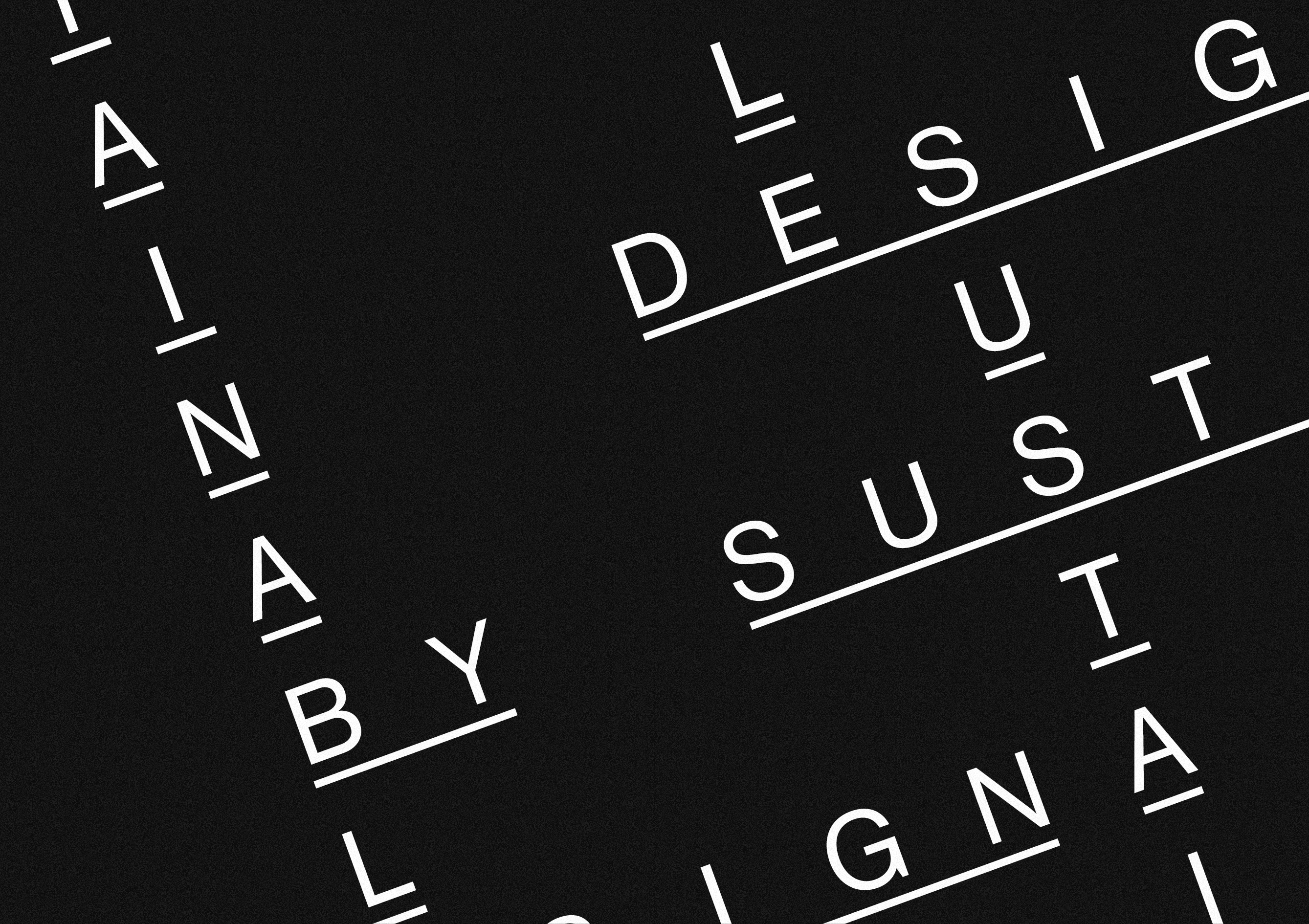



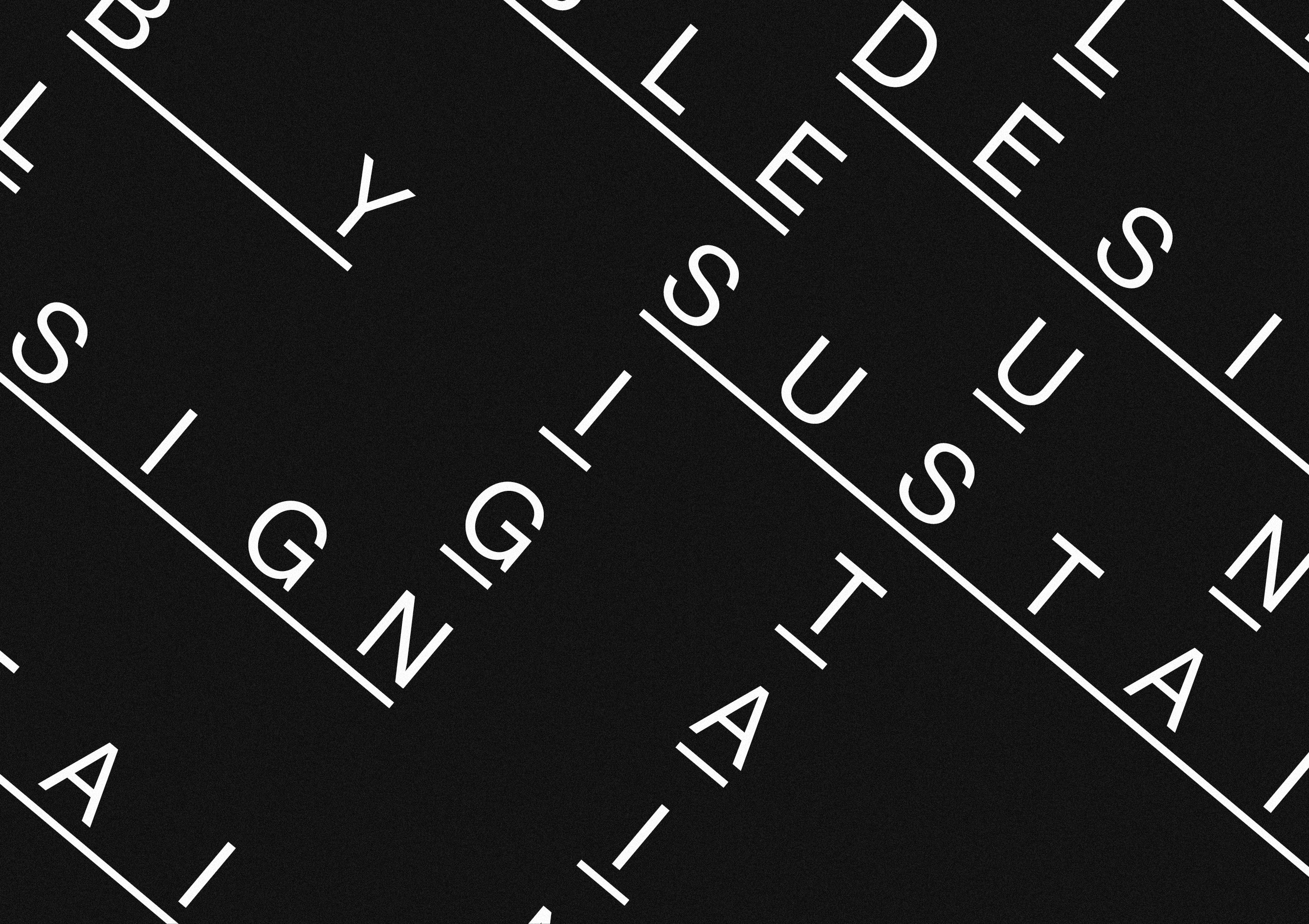
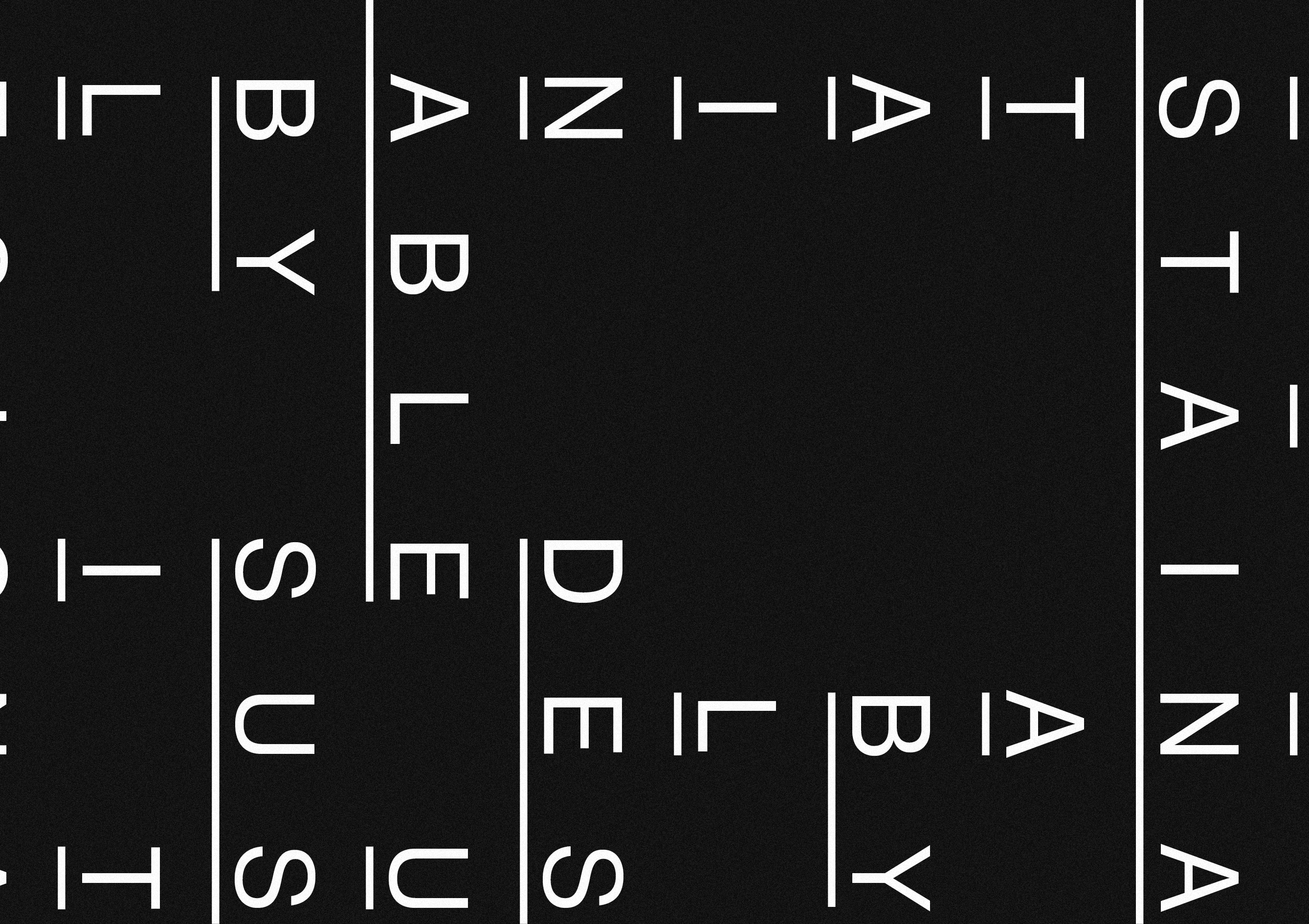


Adapting to a set of more mindful principles will require all resources, goods, services and systems to be designed to be as sustainable as possible. Most importantly not just for their own benefit, or the systems with which they interplay, but also within the wider understanding of our planetary boundaries, the need to protect biodiversity, and the overall human benefits with which they also interact.
‘Resources’ include where we get our energy from, under which fall essentials like renewables, energy storage, food and water – the most important of course being the land itself. Under ‘goods’ fall things like individual products, and under ‘services’ fall actions such as repairs and deliveries. Whilst ‘systems’ include the processes, practices and methods that we use to make all this happen – including economics, finance, the law and so on. Then at the very top sit the different theoretical ‘models’, which might be agricultural, economical, or to do with supply chains. Here ‘Sustainable by Design’ becomes a new model for everyone to think about and start playing with in much greater levels of detail.
The Sustainable Movement therefore has the potential to be the first movement which welcomes together everyone as active participants – people of all demographics, skill sets, roles, qualifications, nationalities, societies, cultures, and even faiths. The actions of working towards a future that is more ‘Sustainable by Design’ offers creative opportunities for all those who want to join, in as little or as large a role as they have the capacity for. The aim should perhaps not be to discourage or discredit anyone who falls short of the benchmarks, but to celebrate every effort that contributes towards an iterative improvement. Learning to run after all starts with little baby steps.
Modernism’s grand failure was that within its lofty ambition to build utopia, it crash landed on the rocks of dystopia instead. Setting the trajectory of progress too far ahead only increases the risk of landing off target by ever wider margins.Whilst the artist’s ego was once an effective personal survival tool, within the infinite intricacies of the 21st-century world, an over-inflated sense of self-worth can no longer compensate for a lack of knowledge or a lack of empathy for those around us. Carne Ross, a diplomat with an interest in complexity theories, likes to say: ‘We think we need to be big to be powerful, when in fact we can be small.’4 This can include the scale and reach of our own actions as well.
The act of making through the process of iteration involves much smaller steps, but maintains a greater sense of transparency and honesty through the continuation of the ‘ongoing process.’ By considering everything a prototype, flaws within the function of a design can be more easily isolated through the cyclical process of review and discussion. This approach takes more people on the same journey, and thus increases the chance of steadier and more consistent progress. Despite all our most noble intentions, we will certainly never achieve net-zero carbon emissions in one giant leap, but their incremental reduction can realistically be designed and structured.
This does not mean individual people still don’t assume great responsibility. Whilst a product designer holds the cards when it comes to sourcing materials that have been recycled or are biodegradable, it becomes the material producer’s responsibility to meet the product designer’s needs. When the goods are taken to market it becomes the distributor’s domain to make sure their fleet of vehicles is zero emissions, and back to the vehicle designer’s role to ensure the parts used to make the electric vehicle can be more easily recycled. Lawyers hold the power to help us protect existing legislation, and improve upon it. An engineer holds leverage within their choice to work for a renewable energy company over an oil pipeline, whilst every citizen has the option to work with their local MP, or even better still, become one! All these choices already exist, and together they decide which future gets to exist.
We are already well on our way to building a movement looking something like this, and it shows the potential to emerge with all the talent of a fully robust scene or ‘scenius’, as we referenced earlier.5 It doesn’t have to be a total way of being, if enough people play an active role in the parts of the puzzle most relevant to them, it becomes more a system of wisdom to which everyone can contribute.
During the 20th-century design of ‘things’, Dieter Rams was a devoted advocate of ‘as little design as possible.’ Today, we are not necessarily talking of the reverse. But the simplicity of what a customer sees in a final product should not be confused with the vast array of choices confronting this next generation of designers. A labyrinth of considerations outside the immediate sphere of their work will call for a proliferation of new tools designed by those in new specialities.
As a guide to how we as designers or makers behave, perhaps the ‘as little design as possible’ mantra becomes instead ‘as thoughtful design as possible’, at least while new foundations are laid out. This need not be a betrayal of Dieter Rams’ beliefs. Instead it only strengthens two more of his Ten Principles: ‘Good design is honest – it does not attempt to manipulate the consumer with promises that cannot be kept’; and ‘Good design is thorough down to the last detail – nothing must be arbitrary or left to chance.’6
Designing to greater depths of meaning stays true to a new 21st-century principle that a product does not just function, it needs to also function in circularity by methods that are ‘Sustainable by Design.’ As Rams said before: ‘Care and accuracy in the design process show respect towards the user.’ Let’s not forget at the top level this needs to first and foremost respect the user’s natural home.
On first impressions, ideas we don’t fully understand have a natural tendency to appear complex, yet this is where the process of design can be most useful. As a method of exploration, learning, understanding and organisation – simplification becomes one of the net results. Fortunately, as John Maeda reassures us: ‘Organisation makes a system of many appear fewer.’7
Leon Battista Alberti once defined beauty as ‘the adjustment of all parts proportionately so that one cannot add or subtract or change without impairing the harmony of the whole.’ Perhaps getting closer to this is essentially what we are designing towards – a mutually dependent ecosystem that includes the concert of people channelling their energy and skills towards new principles, playing under the roof of all the systems through which we interact and live.
During the 1960s at the Ulm School of Design, the product designer became a coordinator who needed expertise not just in areas of planning and design, but also knowledge in the fields of economics, psychology and production too. The designer’s responsibilities only seem to keep growing exponentially. Potentially here lies an opportunity for new splits in roles – the same sort of diversification that occurred at the end of the 18th century – when craftspeople first began to blend with new specialists. After all, design schools didn’t even exist 100 years ago – so what kind of new schools can we begin to imagine for this next century?
In 1962, Leonard Bruce Archer reframed the task facing the teaching staff at the Ulm: ‘It is not the aim to produce design, but to produce designers.’8 Likewise today, it should not be our aim to make ‘sustainable design’, but instead to ‘design more sustainable methods of living’. Wherever possible this includes actively avoiding conversation about ‘Sustainable Design’, and much more talk about how ‘things’ come to be more ‘Sustainable BY Design’.
As we adopt new templates to help us work and design within. The economist Kate Raworth offers sound advice when she says it’s not always about finding the correct model (because it doesn’t exist), but rather ‘choosing or creating one that best serves our purpose – reflecting the context we face, the values we hold, and the aims we have.’9
Design has never been a process that is finished. Otherwise it ignores the unavoidable condition by which everything continually evolves over time. Design is no longer a lofty end-vision to be raised onto the pedestal. Design is instead one of the shared fundamentals by which we make simple ongoing choices, and on top of which everything, including the pedestal, stands.
If ‘Sustainable by Design’ is to become one of the popular models of thinking for this 21st century, then the following interview with Charles and Ray Eames in 1972 already offers us a good starting point.10
Q. What is your definition of ‘design’?
A. A plan for arranging elements in such a way as to best accomplish a particular purpose.
Q. Is it a method of general expression?
A. No – it is a method of action.
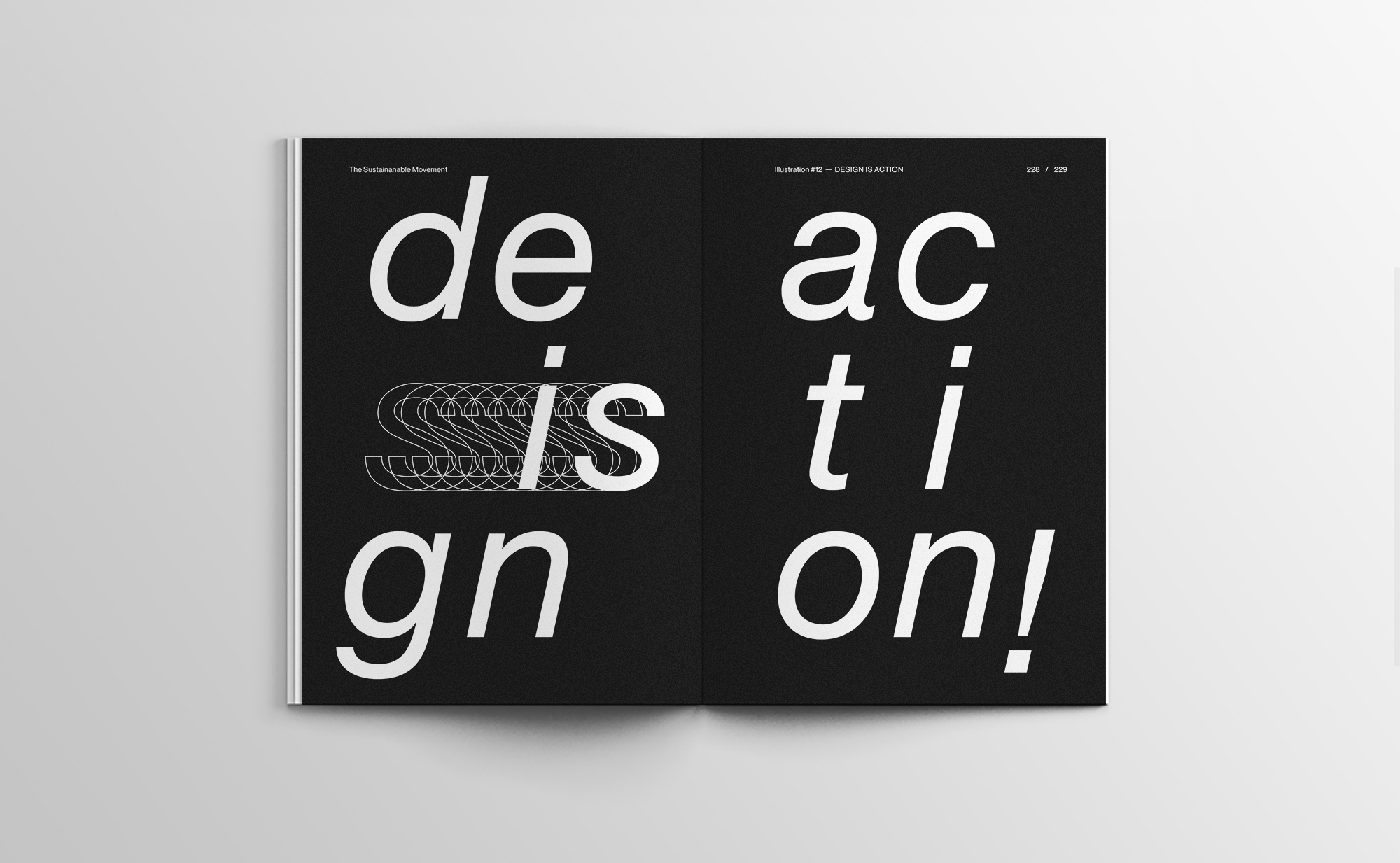
Illustration – Design is Action!
—
Credits & Notes
1
Herbert Girardet
‘Sustainability is unhelpful: we need to think about regeneration’
The Guardian (10 Jun 2013)
2 – 3 / 8
Hatje Cantz
Ulmer Modelle / Modelle nach Ulm
Ulmer Museum | HfG-Archiv (2003)
4
Carne Ross
Accidental Anarchist – Life Without Government
BBC Storyville (2017)
5
Brian Eno
John Peel Lecture
BBC Radio 6 (2015)
6
Sophie Lovell
Dieter Rams: As Little Design As PossiblePhaidon Books (2011)
7
John Maeda
The Laws of Simplicity
MIT Press (2006)
9
Kate Raworth
Doughnut Economics:
Seven Ways to Think Like a 21st-Century Economist Random House Business (2017)
10
Charles Eames cited by Catherine Ince
The World of Charles and Ray Eames
Thames & Hudson (2015)
Section 1 — Roots
Chapter 1 — An Introduction
Chapter 2 — The Rise and Fall of the Eclectics
Chapter 3 — The Bauhaus Function
Chapter 4 — De Stijl Meets Time
Chapter 5 — The Role of the Magazines
Chapter 6 — DADA
Chapter 7 — War. A Redfinition
Chapter 8 — The Ulm Age of Methods
Chapter 9 — Modernism and the Ongoing Project
Chapter 10 — Capitalism Eats Itself
Chapter 11 — Roughly Where We Stand Now
Interlude — Transition
Section 2 — Leaves
Chapter 12 — How Do Movements Happen?
Chapter 13 — Energy Makes Energy
Chapter 14 — Digital Need Not Be Digital
Chapter 15 — All the Signals of Hope...
Chapter 16 — Defining Sustainabilism
Chapter 17 — Sustainable by Design
Chapter 18 — The Future Will Take Us in Circles
Chapter 19 — Where Do We Go from Here?
Chapter 20 — The Role of the Arts
Chapter 21 — The Value in Meaning
Chapter 22 — Be More Tree
Chapter 23 — An Ending. A Beginning
